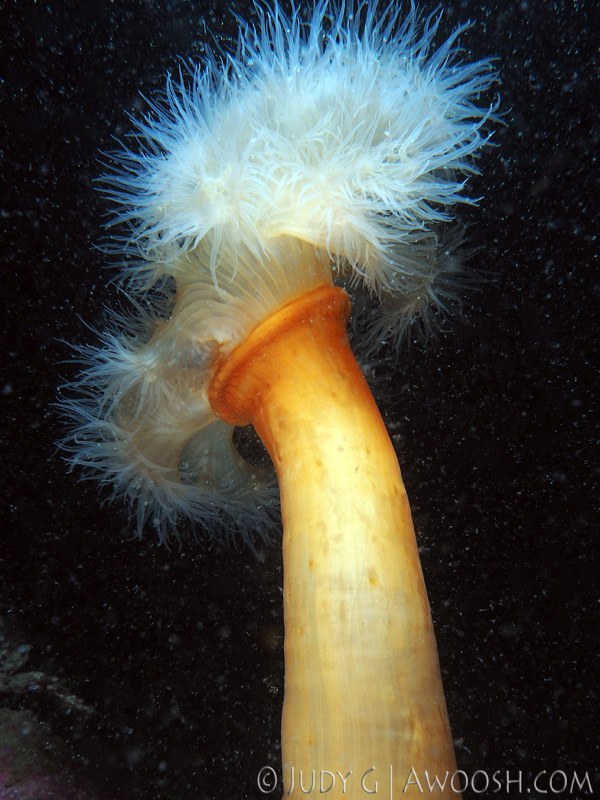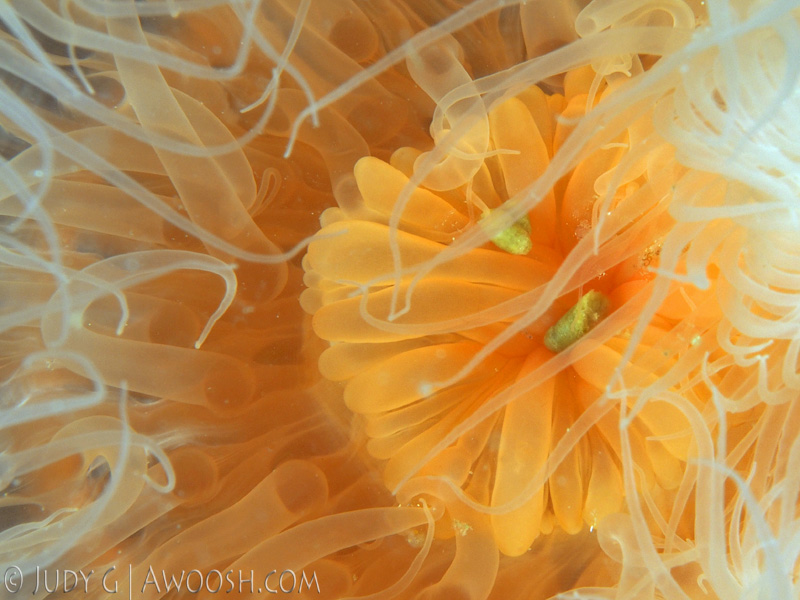Today, I am feeling a tad crabby.
A few years ago, Mr G and I went on a search for a property where we hoped to have a weekend cottage. Our criteria were pretty firm – relatively easy water access for water activities (and ideally, shore diving), not too far from Vancouver, lots of light. We got lucky and found our little piece of heaven, including the shore dive, right before the axe fell.
Vancouver has gone through exponential growth in the past couple of years. Asian buyers, with the newest wave being a seemingly insatiable stream of real estate speculators from mainland China, have created unprecedented demand for real estate. The high demand has caused land and housing prices to skyrocket – to the point that even ‘starter homes’ anywhere in the city (basic 40’s and 50’s bungalows on small city lots), are now well over a million bucks, with the number in the more desirable areas being more like $2+ million. And that makes them pretty much unreachable for hard working, highly taxed Canadians, especially the first time buyers of Generations X and Y.
I’m sad to see this beautiful city evolve in this direction, especially as the trend of these foreign buyers seems to be to knock down any house that is not palatial and new (so many character houses are being flattened), and put up a colossal, energy-sucking, neighbourhood-house-dwarfing behemoth.
I think it is short-sighted to allow so much foreign ownership, of any commodity, by any nationality, in Canada. And these foreign property investors do not pay Canadian income tax, only property tax. They therefore contribute next to nothing to the Canadian economy in return for the safe place to park some money, and the possible escape hatch of immigration here.
Without wanting to appear racist, because for me this is not about race, it is about what is right for Canadians, of all ethnic heritages, I wonder about the source of some of this money. How can so many people who are citizens of a restrictive Communist country acquire this kind of wealth? Is it gained in ways that are in sync with our Canadian cornerstones of democracy, human rights and environmental consciousness? And how are they managing to get the money out and to Canada? Doesn’t China have some rules about the maximum amount allowed to leave the country with each citizen? And isn’t this mass exodus of money from China causing some internal issues over there? Nobody seems to know, or appears to be seeking the answers to the big questions.
We are talking about the kind of wealth where homes in the 5 – 10 million dollar range are snapped up with cash, using Asian agents acting for often faceless buyers who are in China. And there have been recent stories in the news about how some major Canadian banks are floating huge mortgages (in some cases millions of dollars) to some of these off-shore, non-Canadian buyers. One reporter found numerous instances where the occupation of the borrower was listed as ‘student’, or ‘housewife’. Seriously?
Often, there are bidding wars for the desirable properties (certain areas, addresses with ‘lucky’ numbers, good feng shui etc), and these properties typically go for well over asking (and assessed) value. Hard working, tax paying Canadians are not able to compete in this market. It is guesstimated that in the past couple of years, the majority of sales of properties in metro Vancouver, especially on the west side and the north shore, were to off-shore buyers.
Well that was a bit of a rant. Just needed to get that off my chest ;^)
When we found our property (with the help of an excellent local real estate agent, and after a thorough search), we were lucky in our timing – the area where we were looking (outside of Vancouver) had been in a real estate slump for several years. Standing on the site on a beautiful summer day, we just knew in our bones that we wanted to be here. But little did we know when we embarked on a project to replace an existing, condemnable, funky little triangle shaped cabin with a more modern and functional cottage that we would go down a bureaucratic planning office rabbit hole of studies, and permissions, and more studies, and more permissions (including a Crown Land Tenure!), plus navigating murky language regarding a restrictive covenant on the property – all a long arduous journey towards the prize – a humble building permit! It took us two different architect produced dwelling designs, and almost a year, before they finally coughed one up…
In the end, we built more of a house than a cottage. This is what happens when the bureaucracy gets the better of you, and you are left with no choice but to blow up some rock to squeeze in a livable dwelling on to a challenging site. Hindsight is always 20/20 – blasting was the right call. It is not a big house, but it is a home for us. We liked it so much when it was done that we decided to pull up our tent pegs and move out of the big smoke to live here permanently.
So we sold our house in Vancouver – something we hadn’t envisioned doing at the outset. But alas, two strikes against that house being in the market for the wave of Asian buyers – the number 4 in the address, and downhill to a cemetery! Both bad luck! So no mega payout for us, but we are happy that it sold to a nice Canadian family with young kids, who don’t plan to tear it down and build a palace in its place.
Impatient to explore under the surface, we made our first dive before the new house was even finished. There is a little islet out in front of us – a bit of a swim from our walk in water access, but it looked promising, so we took a compass heading and found it underwater.
Like much of British Columbia west coast diving, the site is rocky, with ledges and cut throughs. And those rocks, although not paved with stuff like they would be in current hammered Discovery Pass, which is quite a bit further north from here, still have lots of cool things on them. On our dives there I have seen several types of nudibranchs, shrimps, different varieties of anemones, giant barnacles, sea stars galore, rock fish, sculpin, ling cod, crabs, feather stars, tube worms, and all sorts of other groovy stuff.
The first few times we dove the rock I did not take the camera. We were really just into exploring the site and getting familiar with the terrain. It had been a while for both of us since we had worn our drysuits, and it always takes a couple of dives to shake out the cobwebs and get the weighting, and the drysuit technique, dialled in.
And then, when I finally did schlep the camera down with me, disaster! We aborted the dive early as Mr G was having some issues with his drysuit, and I never even took a shot. On the long surface swim back to shore, I had my camera rig on my chest. It was a heavy sucker, so I had inflated my drysuit and put some air in my wing to keep me floaty.
Totally my fault – futzing with the camera on my chest, I somehow accidentally opened the latch. Suddenly, as the camera housing filled with water, it got heavier. I could feel the glub, glub, glub in my chest as it farted huge bubbles of air. But there was nothing I could do – I was not strong enough to hold it out of the water for the swim back.
So splash one DSLR camera body and macro lens. Fortunately, housings like the one I had are not damaged by a flood, as long as they are rinsed quickly and properly in fresh water, and the hot shoe connection for the strobes is carefully dried out.
But, it felt like a sign. I had been waffling about whether to change out my big DSLR rig for something lighter for a while. I had been having some issues carrying the big camera on dives – on a trip to the Philippines last year, I slept funny on one shoulder the first night, and suffered from really painful neuralgia in my arm for the duration of the trip. It was so bad that I could only take one shot, then I’d have to let the arm recover for a few minutes before I could do it again.
I was worried that downsizing from a DSLR would negatively affect my imagery. So I took my time making the change. I had another DSLR camera body and an assortment of lenses to keep me going with the old rig, but I never did have the guts to try taking it again on a cold water shore dive.
After a bunch of reading, I zeroed in on an Olympus OMD Mark II in a Nauticam housing. It is a sweet little unit that I’ve now shot on a couple of trips (Thailand In January and then Roatan in March). So far, other than missing the magic optics of the Nikon 105mm macro lens, I really am loving the new rig. It weighs less than half the previous set up I had – lighter to pack, lighter to carry to the boat or shore dive, lighter under water. I can finally one hand a shot (something that was next to impossible for me to do with the DSLR set up), and the thing takes high def video. It also has a seriously awesome selection of menus, including one that allows you to change the proportions of the image you are shooting in the camera. I had fun with that in India…
I had an issue with the new camera housing in Roatan – the shutter control became fubar about two thirds into the trip. Backscatter took the housing back and repaired it under warranty. So the first camera dive I did in cold water with it was a couple of days ago.
In a way, this was another check out dive – get those drysuits dialled in, check out the mooring chain for a friend’s boat, and check out the repaired camera housing. So we did not hit the G Spot this time (our friend Larry L has suggested this is a good name for the islet site out in front – nice one Lar ;^). Instead we stayed along the shore, over a very mucky bottom, where we maxed out at 45 feet (and man, was it was cold down there!). A thermocline at 20 feet meant a much warmer safety stop.
Right now the water is not very clear – there is a huge outflow from the ‘mighty’ Fraser River in the spring, and it brings a lot of silt and resultant snotty green water out into the ocean anywhere near Vancouver. If you get down below 40 feet or so, the viz often opens up, but it can be dark – the plankton and gunk in the water suck up a lot of the available light.
I’ll be blogging more about diving in the front yard in the future. I can’t wait to dive the G Spot with the new camera in some decent visibility. But for now, here are a few teasers from the weekend check out dive:

A solitary plumose anemone. This was a big one – almost two feet high. You can see from all the backscatter that there was a lot of spunk in the water, especially over this very silty bottomed site.



